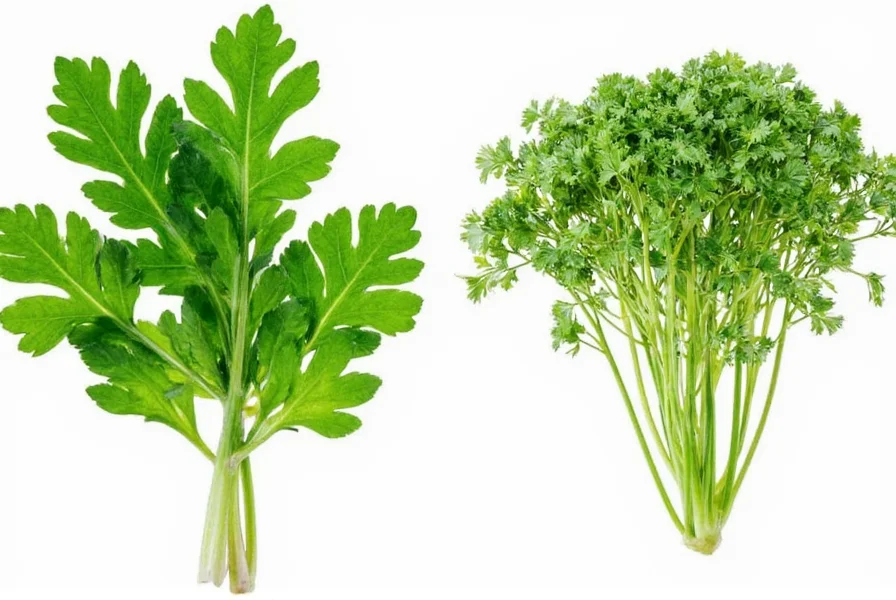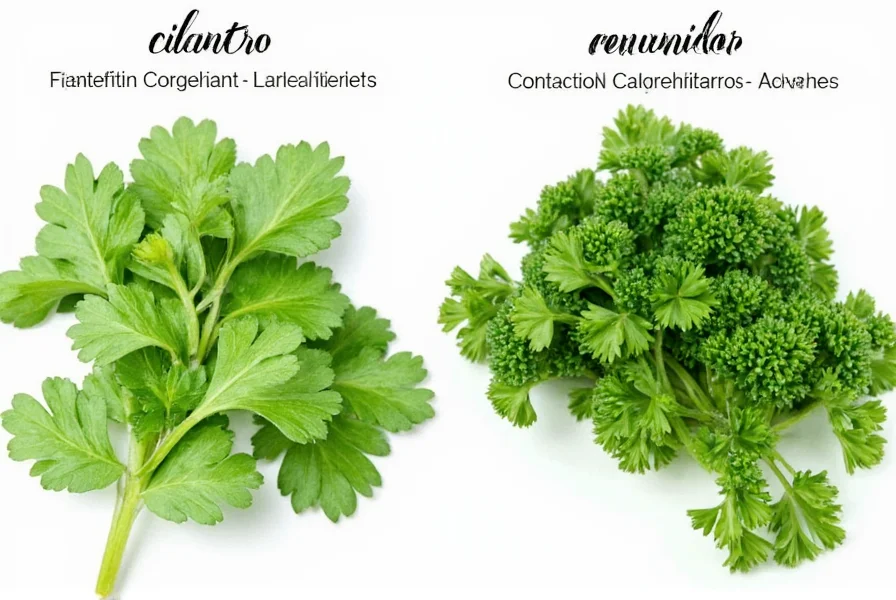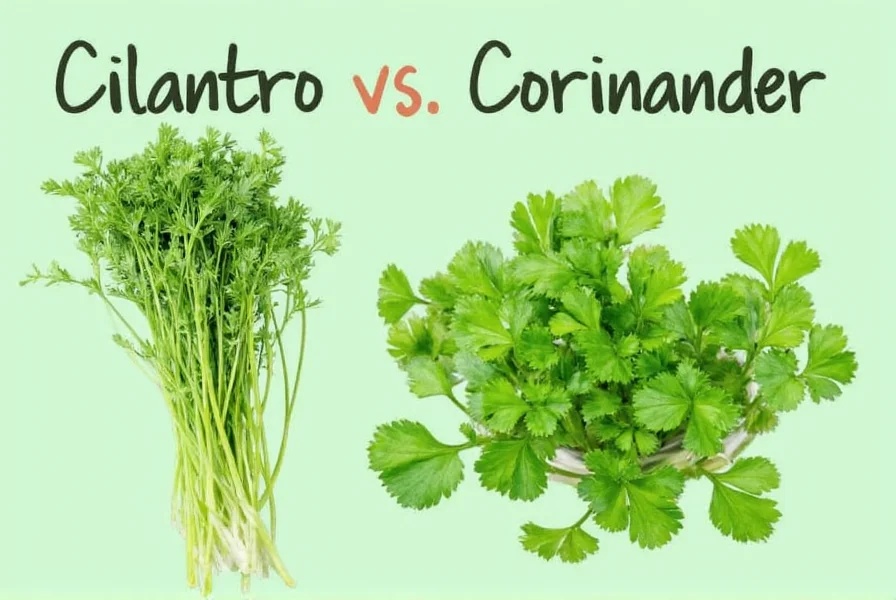Understanding the relationship between cilantro and coriander eliminates confusion in recipes and grocery shopping. Both terms describe different parts of Coriandrum sativum, an annual herb in the Apiaceae family that's been cultivated for over 7,000 years. The plant's dual naming system varies significantly by region, creating unnecessary complexity for home cooks and professional chefs alike.
Botanical Background of Coriandrum sativum
The cilantro/coriander plant grows 30–60 cm tall with slender stems, triangular leaves, and small white or pink flowers that develop into spherical fruits. What many don't realize is that “coriander seeds” are technically the plant's fruit – a schizocarp that splits into two dry fruits when mature. The fresh leaves contain aldehydes that give cilantro its distinctive citrusy flavor, while the seeds develop aromatic compounds like linalool that create coriander's warm, nutty profile.

Regional Naming Differences Explained
The terminology divide follows distinct geographical patterns:
| Region | Leaves/Stems | Seeds | Whole Plant |
|---|---|---|---|
| United States & Canada | Cilantro | Coriander | Cilantro plant |
| United Kingdom & Commonwealth | Coriander leaves | Coriander | Coriander plant |
| Mexico & Latin America | Cilantro | Coriandros or Cilantro en grano | Cilantro |
| India & South Asia | Dhaniya leaves | Dhaniya | Dhaniya plant |
This regional variation explains why American recipes specify “cilantro” while British cookbooks might list “coriander” for the same ingredient. When following international recipes, always check whether the author means the leaves or seeds – a critical distinction that affects flavor profiles significantly.
Culinary Applications Compared
Chefs and home cooks use cilantro and coriander differently due to their contrasting flavor chemistry:
- Cilantro (fresh leaves/stems): Adds bright, citrusy notes to salsas, guacamole, ceviche, and Southeast Asian salads. Best added at the end of cooking to preserve volatile flavor compounds.
- Coriander seeds: Provide warm, lemony-spicy flavor to curries, pickling brines, sausages, and baked goods. Often toasted to enhance aromatic compounds before grinding.
Understanding when to use cilantro versus coriander seeds prevents recipe failures. While you can substitute ground coriander for fresh cilantro in some cooked dishes (using 1 teaspoon ground coriander for 2 tablespoons fresh cilantro), the reverse substitution rarely works due to intensity differences. The difference between cilantro and coriander in cooking fundamentally alters dish outcomes.
Genetic Factors in Cilantro Perception
Approximately 21% of people possess a genetic variation (OR6A2 gene) that makes cilantro taste like soap. This genetic predisposition explains why some individuals hate cilantro but like coriander seeds – the problematic aldehydes exist primarily in the leaves, not the seeds. Those with this genetic trait often prefer using coriander seeds in recipes that call for fresh cilantro, or substitute herbs like parsley or culantro (a different plant entirely).

Practical Storage and Usage Tips
Maximize freshness with these evidence-based techniques:
- Storing fresh cilantro: Trim stems, place in water like flowers, cover loosely with plastic bag, and refrigerate. Changes water every 2 days for up to 3 weeks of freshness.
- Preserving flavor: Freeze whole leaves in olive oil rather than chopping, which releases enzymes that accelerate spoilage.
- Seed preparation: Lightly toast coriander seeds in a dry pan before grinding to increase linalool concentration by up to 37%, enhancing flavor complexity.
When a recipe specifies what is coriander in place of cilantro, remember that ground coriander provides only 15-20% of fresh cilantro's flavor impact. Adjust quantities accordingly, and consider adding lemon zest to compensate for missing citrus notes.
Common Misconceptions Clarified
Several myths persist about this versatile herb:
- Myth: Cilantro and culantro are the same plant.
Fact: Culantro (Eryngium foetidum) is a different species with stronger flavor, often called “Mexican coriander.” - Myth: Coriander seeds come from a different plant than cilantro.
Fact: Both originate from Coriandrum sativum – the same botanical source. - Myth: Dried cilantro leaves equal fresh cilantro.
Fact: Drying destroys most volatile compounds; reconstituted dried cilantro lacks 80% of fresh herb's flavor profile.
Understanding why cilantro is called coriander in some countries prevents shopping mistakes. When traveling or ordering international ingredients, specify whether you need the fresh herb or dried seeds to avoid confusion.
Frequently Asked Questions
Can I substitute coriander seeds for fresh cilantro in recipes?
Yes, but with significant adjustments. Use 1 teaspoon ground coriander seeds for every 2 tablespoons fresh cilantro, and add lemon zest to compensate for missing citrus notes. This substitution works best in cooked dishes but fails in raw applications like salsa where fresh cilantro's texture matters.
Why do some people think cilantro tastes like soap?
Approximately 21% of people have a genetic variation (OR6A2 gene) that makes them perceive cilantro's aldehydes as soap-like. This genetic trait affects cilantro leaves but not coriander seeds, explaining why some dislike fresh cilantro but enjoy dishes with coriander spice.
How do I grow cilantro that doesn't bolt quickly?
Plant cilantro in partial shade during cooler months. Choose slow-bolting varieties like 'Slo-Bolt' or 'Costa Rican Giant.' Harvest outer leaves regularly to prolong leaf production. In hot climates, plant every 2-3 weeks for continuous harvest as cilantro bolts quickly in temperatures above 75°F (24°C).
What's the difference between coriander and Chinese parsley?
Chinese parsley refers to culantro (Eryngium foetidum), a different plant with longer,锯齿状 leaves and stronger flavor than cilantro. True coriander/cilantro comes from Coriandrum sativum. Culantro withstands cooking better and is common in Caribbean and Latin American cuisines.
How long do fresh cilantro and coriander seeds last?
Fresh cilantro stays vibrant for 1-3 weeks when stored properly in water with a loose plastic cover in the refrigerator. Coriander seeds maintain peak flavor for 6-12 months in an airtight container away from light. Ground coriander loses 50% of its volatile compounds within 3 months.











 浙公网安备
33010002000092号
浙公网安备
33010002000092号 浙B2-20120091-4
浙B2-20120091-4